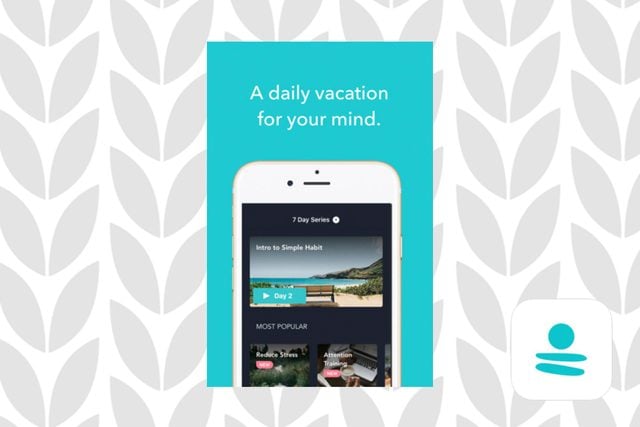What Happened After I Tried 5 Different Sleep Apps to End the Insomnia I Had All My Life
Updated: Feb. 21, 2023
If you have a hard time falling asleep at night, get ready to download solutions—no special pillows, pills, or blackout shades required.
I have been suffering from insomnia literally since I was born. To this day, there are some nights when even Lunesta, an over-the-counter sleeping pill, doesn’t even work. I’ve tried all sorts of medications, unplugging strategies, and natural remedies for a better sleep, but nothing has helped. What I do know is that meditation has helped me in many other areas of my life, so I thought, why not here? We’re living in a time where meditation and technology are (somewhat ironically) linked, and there are apps that combine a number of soothing sounds, guided meditations, breathing techniques, iPhone white noise features and even bedtime stories to help us shut off our busy brains and cross that elusive line between thinking and dreaming. Find out more about these natural sleep aids to help you fall asleep faster.
“If you’re a lifelong sufferer of a sleep disorder who has tried numerous solutions, there is no reason not to give sleep apps a try,” says Sanjeev Kothare, PhD, Director of Sleep Education at NYU Langone. “Combined with basic healthy behaviors like good diet and exercise, it may improve your quality of sleep.” (To really cure insomnia, he cautions, you may need to consult a sleep specialist and possibly undergo cognitive behavioral therapy.) In the meantime, Dr. Kothare coached me through use of several sleeping apps designed to shut down the “awake circuitry through the prefrontal cortex” that remains active when you can’t sleep. Don’t miss the 13 secrets recommended by sleep doctors for a more restful sleep.
Simple Habit
How it works: All of the features on this app are very specific unlike other sleeping apps. For example, you can choose “meditation for commuting” and then get even more specific: train, car, walking, bus… for sleep, they offer “Can’t Sleep,” “Going to Sleep,” and “Restless.” Users also have the option of a 7-day Deep Sleep series (the most popular meditation) or other 5- to 20-minute installments for restlessness, restful naps, having trouble falling asleep, and more. “Some teachers focus on breathing patterns and controlling the inhalations and exhalation,” says founder Yunha Kim. “Others focus on bringing awareness to different parts of the body through body scans. The choice is up to the users to find the method and voice works for them.”
The verdict: The sleep meditation is soothing, but I wish it were longer. It definitely helps take me from the stage of busy mind to feeling that it’s safe to try and wind down. I felt calmer and more comfortable taking the risk of letting myself try to surrender to sleeping.
The doctor says: The sleep component to this app helps with relaxation, so you should continue using it if it soothes you. Now, as for the extra-bedtime features, I wouldn’t advise taking advantage of all of them since it might turn out to be counterproductive.
If sleeping apps don’t work for you, try one of these 11 weird but genius tricks to help you fall asleep.
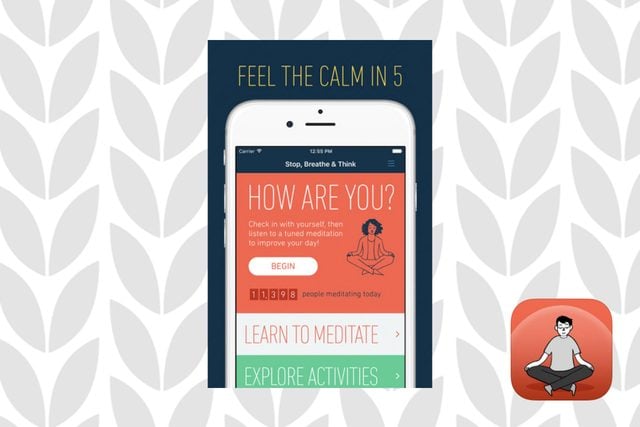
Stop, Breathe, Think
How it works: Stop, Breathe, Think allows you to chart how you are doing mentally, physically, and emotionally. It then suggests meditations based on your state of mind that will reinforce the positive. So if you choose “Restless, Tired, Exhausted, Anxious,” it will suggest some solid guided meditations for sleep. The team behind the app relied on clinical research in addition to Indian and Tibetan meditation tradition to design their meditation tracks. The Falling Asleep meditation, for example, is based on the work of Tibetan meditation master Tulku Thondup, and it uses guided imagery to ease you into sleep.
The verdict: In one of my check-ins, they suggested a breathing exercise. It gave one instruction: inhale for four counts, hold for seven counts, exhale for eight counts; then left me to it. I kept it up on my own for what I would guess was two minutes, put my phone on airplane mode, and for the first time in months, fell asleep without a sleep aid. I slept right through the night. On another night, I didn’t fall asleep to the app, but once again felt myself feel a bit more relaxed, even warmer, and less restless, making it seem a bit safer to try to let my mind drift to sleep. I later found out that 4:7:8 breathing is based on an ancient Indian ritual.
The doctor says: Mindful, regulated breathing, whether it’s using an ancient Indian ritual or just slowing your own natural pattern, is a good way to allow one’s sleep circuitry to take over from wake circuitry. This particular method is well-known and proven to be effective.
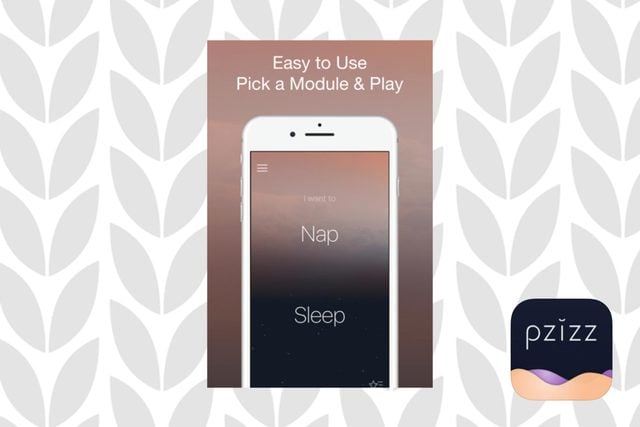
Pzizz
How it works: Giving you the option of both sleep and nap, the app will keep itself playing until the time you pre-set to wake up. It uses one guided meditation set against a backdrop of different sounds you can choose, in either a male or female voice. “In order to put someone to sleep, you need to capture their attention enough that they stop thinking, but not capture it so much that they stay awake because they’re captivated by the audio. The magic happens in the space in between,” says the founder. “Have you ever been driving along the highway and started feeling drowsy, even though you had gotten plenty of sleep? It turns out the low, random, rumbling vibrations from driving over the road actually create this lulling effect that basically rocks you to sleep. It happens so gradually that you almost don’t even notice it. We can re-create a sopite-syndrome-like effect through the music, and it’s one of the many ways we design the audio to lull you to sleep.” A 2007 article about Pzizz in the Cognitive Technology Journal from Indiana State University compared the app against other solutions, and it came out on top by a big margin.
The verdict: On both nights I tried the app, with both a man and a woman’s voice and several different meditations, it didn’t help me relax or fall asleep. I could see how it would be soothing for people who like to listen to someone’s voice, but I think the lack of direct action or guidance to specific thoughts rendered it as one of the ineffective sleeping apps for me, and I remained restless.
The doctor says: For some, this may be effective working like white noise in the background. Others don’t respond as well to white noise, and research about the long-term effects of white noise on the brain is contradictory and inconclusive. These are the 10 medical conditions that could be behind your incessant sleep deprivation.
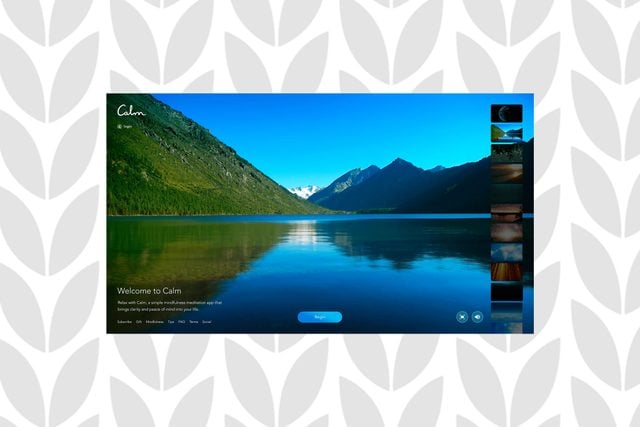
CALM
How it works: There is something very soothing and comforting about being told a story while tucked up in bed. The founders instinctively felt that creating bedtime stories for adults could be a very effective way to help people fall asleep naturally, but they also did research to back up their assumptions. They consulted clinical psychologist Steve Orma, PhD, who specializes in the treatment of stress, anxiety, and insomnia, while developing Sleep Stories.
The verdict: I love CALM’s guided meditations, but the sleep stories did not help me fall asleep. Perhaps it was the tone of the narratives or the content. While I enjoyed listening to the stories at first, 35 to 40 minutes was a long time, and I constantly found my mind wandering. It did allow me to catch my mind wandering and try to focus on something else, but ultimately I didn’t fall asleep. I had the same experience with the guided meditations, mostly because I have never been responsive to progressive muscle relaxation or body scans—not because I haven’t eagerly tried, but it just doesn’t work for me.
The doctor says: Here is a perfect example of why results are so varied. Somone who doesn’t have funny memories associated with the reader might have fared better. Also, broadly speaking, stories with narratives demand a level of cognitive involvement—and hence awake circuitry—on the listener’s part that may interrupt sleep. These are the 10 worst things you do before bed that leave you feeling restless.
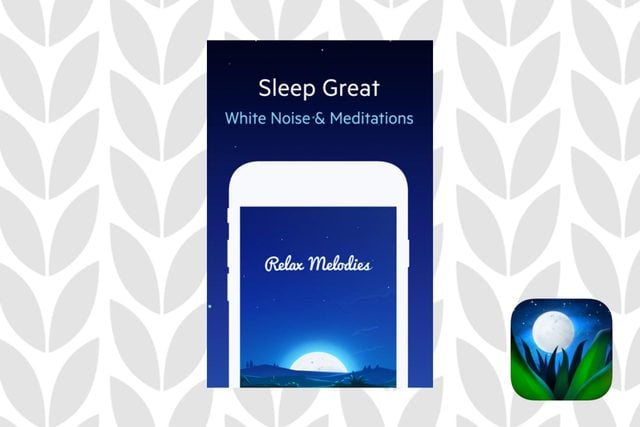
Relax Melodies
How it works: You basically mix and match as many different sounds and melodies as you’d like—there are over 100 sounds and guided meditations—to create a calming track, with the option to add a guided meditation. Some sounds are direct, like “Rain” and “Cat Purring,” while others are a bit more obscure, like “Eternity” and “Music Box.” Ultimately you create a “custom ambiance” that makes you feel comfortable and relaxed. “We’ve had a lot of testimonials from users that told us they could create a soundscape that reminded them of good moments from their childhood, or of the atmosphere of their hometown, so they could feel better and get to sleep,” says Simon Alex Bérubé.
The verdict: It’s very soothing if you just need music without talking, and the soundscapes you can create are very calming, especially the ones that come pre-set, so it does have the power to shift your mood a bit. There are also a lot of guided meditations, and I’m eager to experiment with more to see if there’s one that really resonates with exactly what I need. However, sadly, I have yet to fall asleep to it. Experts also say these eight little changes can help you sleep better in just one day.
The doctor says: The app uses the same principle as white noise. As for its effectiveness, people will respond differently depending on their personal associations with certain sounds, but the soothing frequencies of music can be beneficial for improved sleep.
Helaina Hovitz is an editor, journalist, and author of “After 9/11“.
